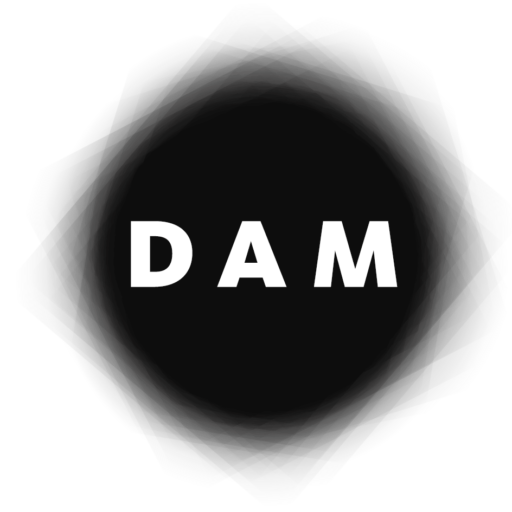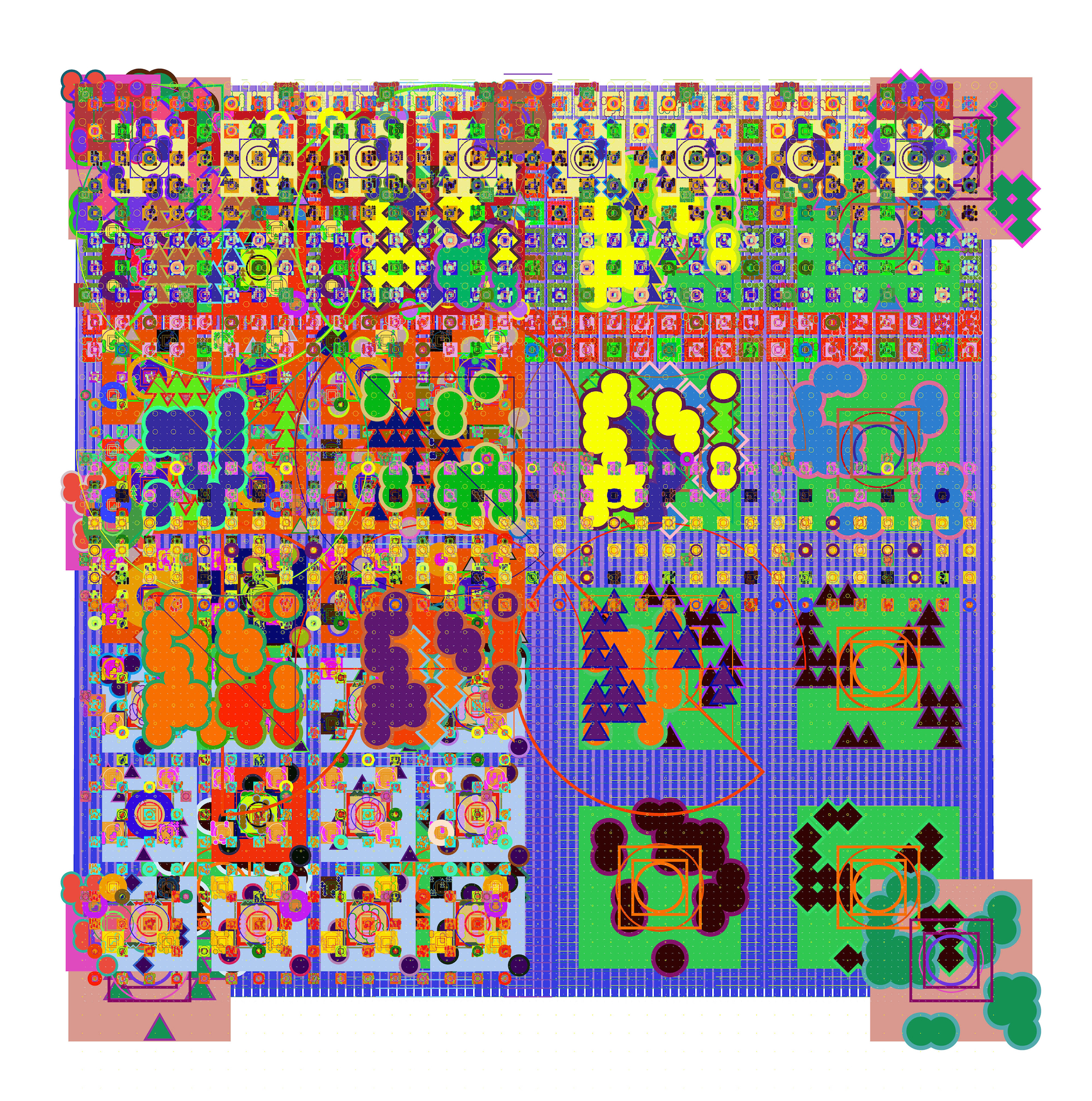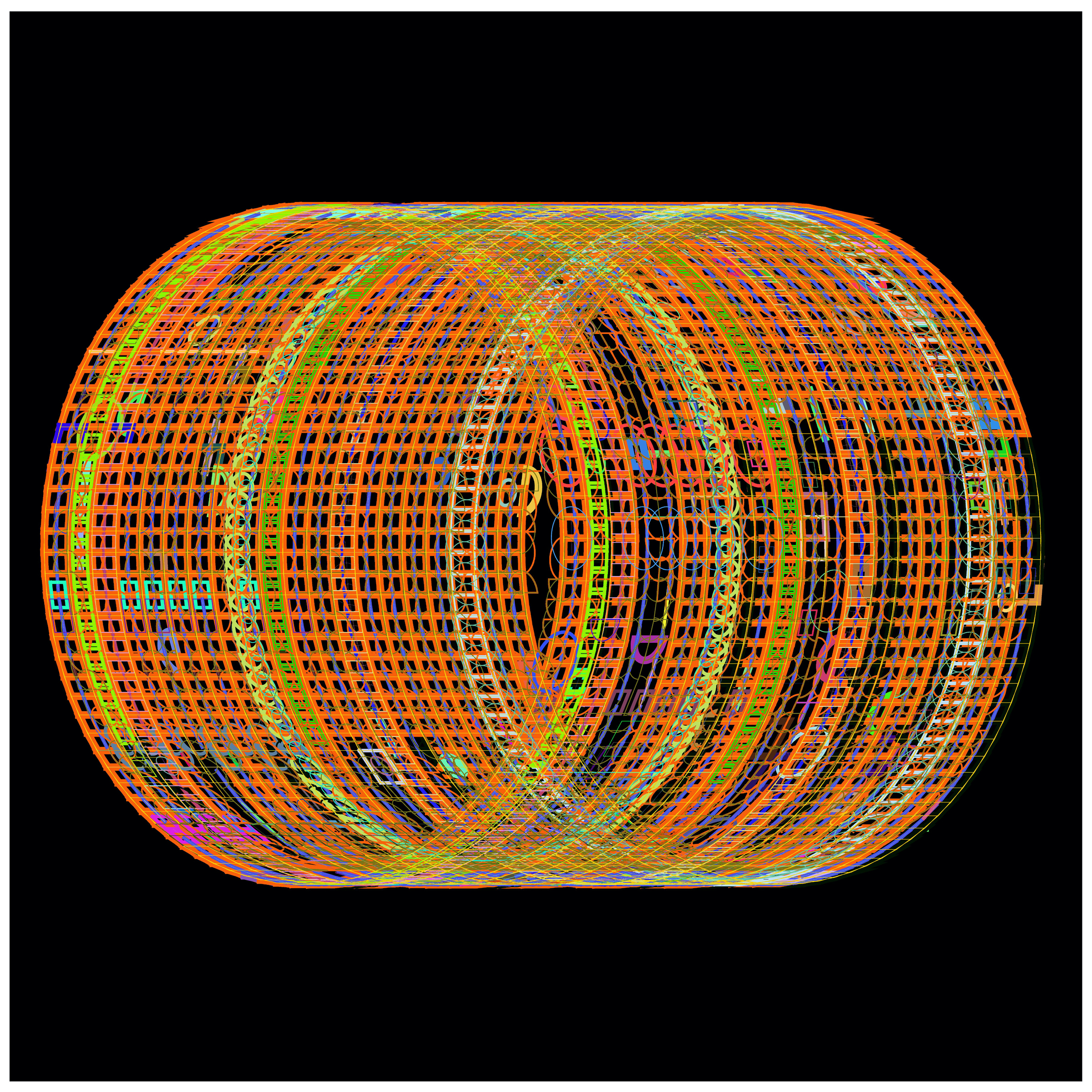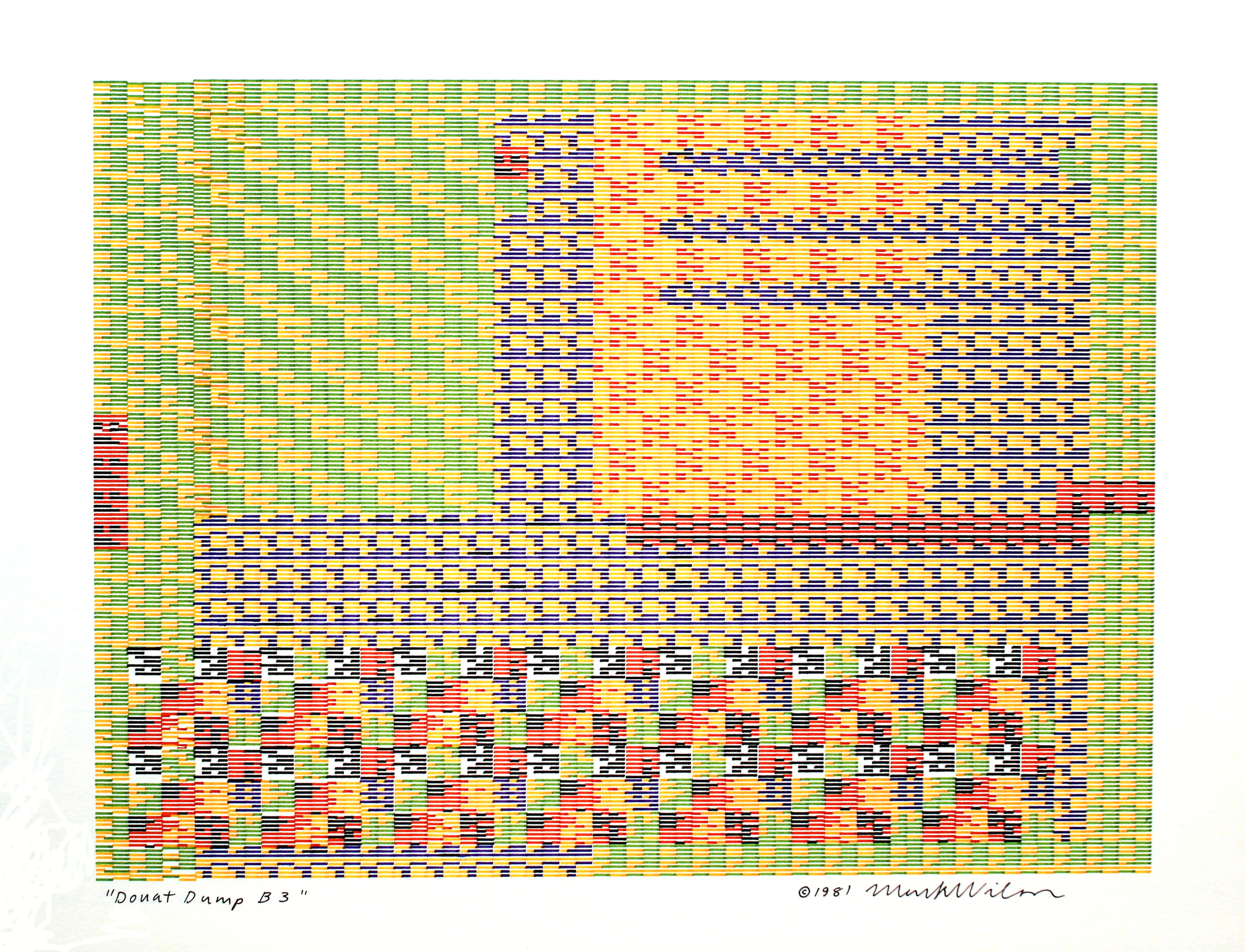
Mark Wilson is an artist, author and programmer who created his first computer-generated artworks in the early 1980s and has been part of a group of artists who started using computer software to create art in the early stages of personal computing.
Website of Mark Wilson:
www.mgwilson.com
Recent works (2008 – 2010)
Following on previous phases, Wilson uses his own software to map pixels from simple screen images onto various surfaces. In this collection of works, the pixels are mapped to a planar surface and displayed in square or three-to-one compositions. The artworks are produced using a large format archival printer, introducing an enhanced image quality and finer details, as well as more accurate color processing. The compositions in this series are reminiscent of circuit boards, evoking his early paintings and drawings from the 1970s, which precede the use of computers.
Square Plane Square Cone (2007 – 2008)
This collection of images are formatted as square artworks, using custom software that maps pixels onto planar or conic surfaces. The mapping process creates different geometric objects such as squares, circles, and lines to represent each pixel. The process is repeated a number of times, creating complex layering, with line widths being progressively varied in the layering process. The mapped grids vary in dimension as well, but they are aligned in simple arithmetic progression.
Three to One (2005 – 2008)
In this series the images are formatted as three to one horizontal artworks. Wilson’s software maps pixels from simple screen images onto various planar, conic, and polar surfaces. The mapping process creates different geometric objects such as squares, circles, and lines to represent each pixel. The process is repeated a number of times, creating complex layering. Random processes are employed in the initial generation of the screen image, as well as the mapping procedures and the color selection. A run of the software can produce a large numbers of images.
Plotter drawings (1981 – 1994)
This phase comprises the earliest plotter drawings created by Wilson on a microcomputer (Texas Instruments 99/4a) and an IBM PC, as well as subsequent series developed with faster and more advanced PCs and Microsoft operating systems. Many of these artworks were exhibited in different editions of the ACM SIGGRAPH Art Show.

An Interview with Artist Mark Wilson
by Julie Karabenick
March, 2009
(excerpts)
When I started using computers in 1980, very few artists were using them. To me, these machines were totally cool and exciting. Back then there was little software of interest to an artist like myself. To make art with computers, you had to invent new working procedures. I bought a personal computer and learned to write my own software. I was trying to find a unique way of using the computer and software to create geometric images.
[…]
Writing software can be very intuitive. Even with a very formally defined programming goal, there are usually many different ways to achieve that goal. Choosing a good path to achieve the goal is a question of intuition, judgment, intelligence, and probably a thousand other things. In my case I don’t have a formally defined goal—except to make what I hope are interesting pictures. So I’m juggling these various algorithms—these recipes—in my software, adding a bit more here, taking some away there. I could almost describe my working process as “Algorithmic Expressionism.” This might be a bit of hyperbole, but again, I don’t have a formal goal. I follow the process where it leads me.
[…]
The power and excitement of image making with these machines lies with their power to create many choices. Randomness does lead to surprises and this is always exciting.
[…]
Computers are democratic art making machines. Artists have always been interested in technology and have been eager to employ whatever tools offer the possibility of better, new, and different image making. Some artists like myself write their own software and essentially control the whole process of image making. For other artists, there’s a kind of continuum of computer use, from heavy to light.
All mediums have inherent confines, but I think that artists typically try to make use of whatever virtues the medium has and ignore the limitations. In my case, writing software is a virtue in the sense that there is really no limit to what the code might do. Your imagination is the only limit.
While my work might be difficult to create in some other medium, it’s also very much a part of the context of abstract and geometric art. This work, while influenced by technology, is ultimately about the context of abstract art.
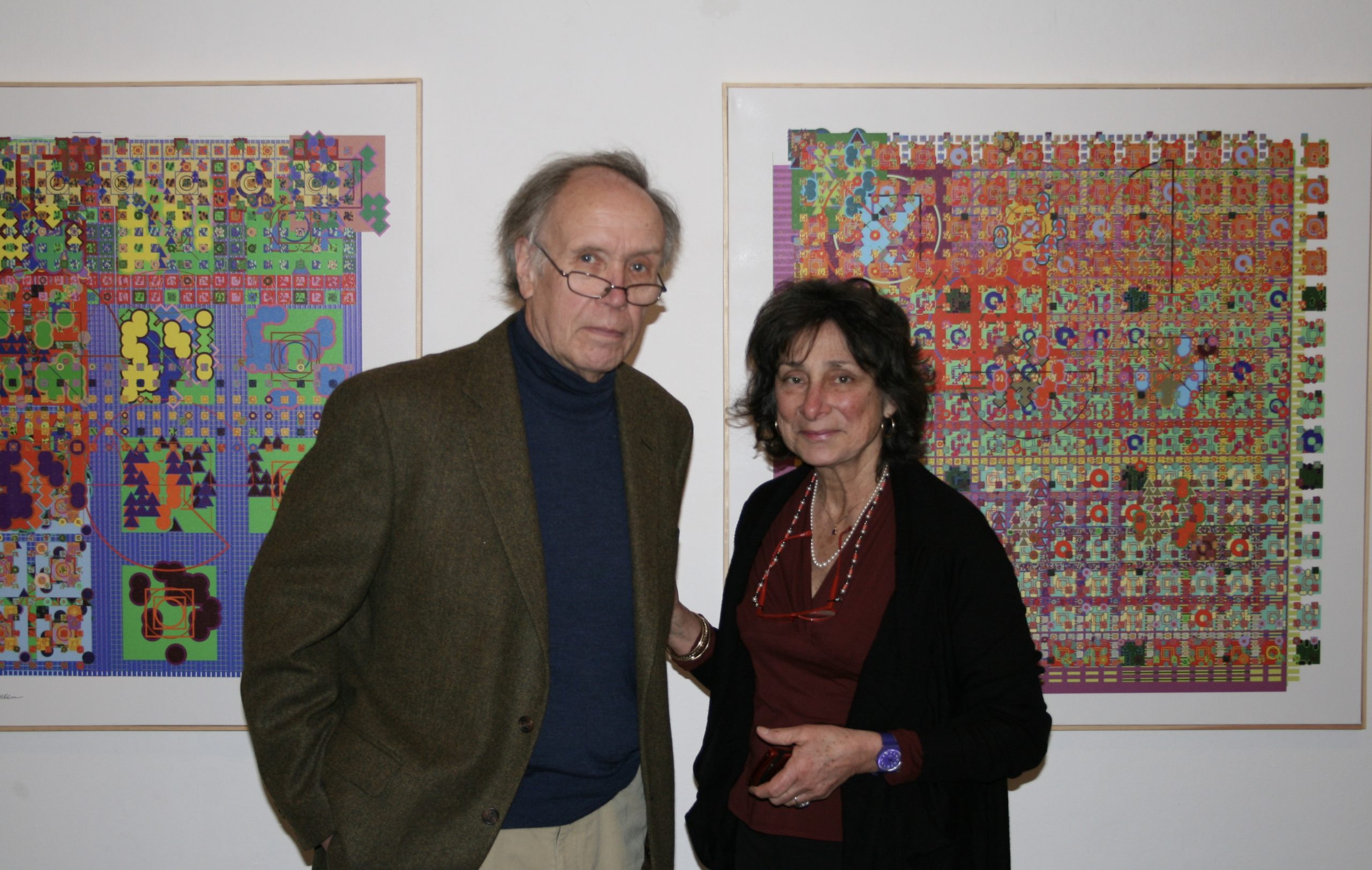
Cottage Grove, OR (USA), 1943
Mark Wilson obtained his MFA from Yale Art School in 1967. During the 1970s, he exhibited his geometric paintings and drawings, which were already inspired by technological imagery, at the Hundred Acres Gallery in New York. In 1980, he purchased a microcomputer (Texas Instruments 99/4a) and learnt programming to create his first computer-generated artworks. In 1981, he bought an IBM PC and from then on continued developing his work using PCs and Microsoft operating systems. He exhibited his work at the 1983 ACM SIGGRAPH Art Show and took part in seven subsequent exhibitions at SIGGRAPH, as well as in other landmark shows such as Computers and Art (IBM Gallery, New York, 1988), curated by Cynthia Goodman. He has taught, lectured and been a visiting artist at the University of California at Santa Barbara, Yale, Carnegie-Mellon, and the School of Visual Arts. In 1992 he was awarded an Honourable Mention in the Computer Graphics category in the Prix Ars Electronica. In 2010, his work was included in the exhibition Digital Pioneers at the Victoria and Albert Museum in London.
Wilson’s work is included in several public, private, and corporate collections, such as those of IBM Corporation, Apple Computer, UniSys Corporation, United Technologies, Mobil Oil, the Museum der Stadt Gladbeck (Germany), Block Museum (Evanston, USA), the Virginia Museum of Fine Arts (Richmond, USA), the Museu de Arte Contemporanea (São Paulo, Brazil), the Portland Art Museum (Portland, USA), and the Victoria and Albert Museum (London, UK).
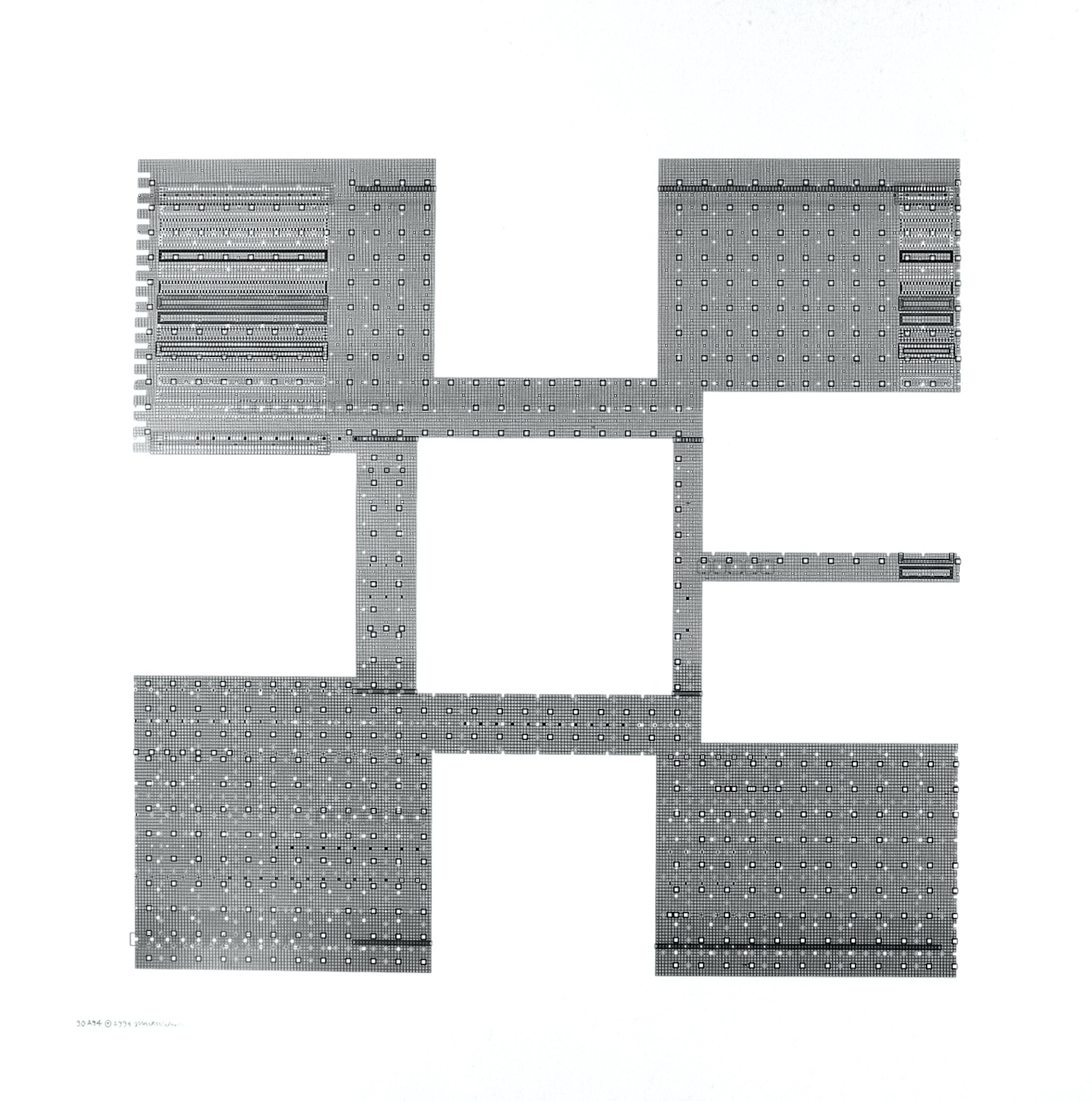
Wilson, M. (1985). Drawing with Computers. The Artist’s Guide to Computer Graphics. New York: Perigee Books. [EN]
–– (2008). Three to One, 2005-2008. Artworks catalogue. [EN]
–– (2008). Square Plane Square Cone, 2007-2008. Artworks catalogue. [EN]
–– (2010). Recent Works, 2008-2010. Artworks catalogue. [EN]
–– (2011). Recent Works, 2010-2011. Artworks catalogue. [EN]
Karabenick, J. (2009). An Interview with Artist Mark Wilson. Geoform. [EN].
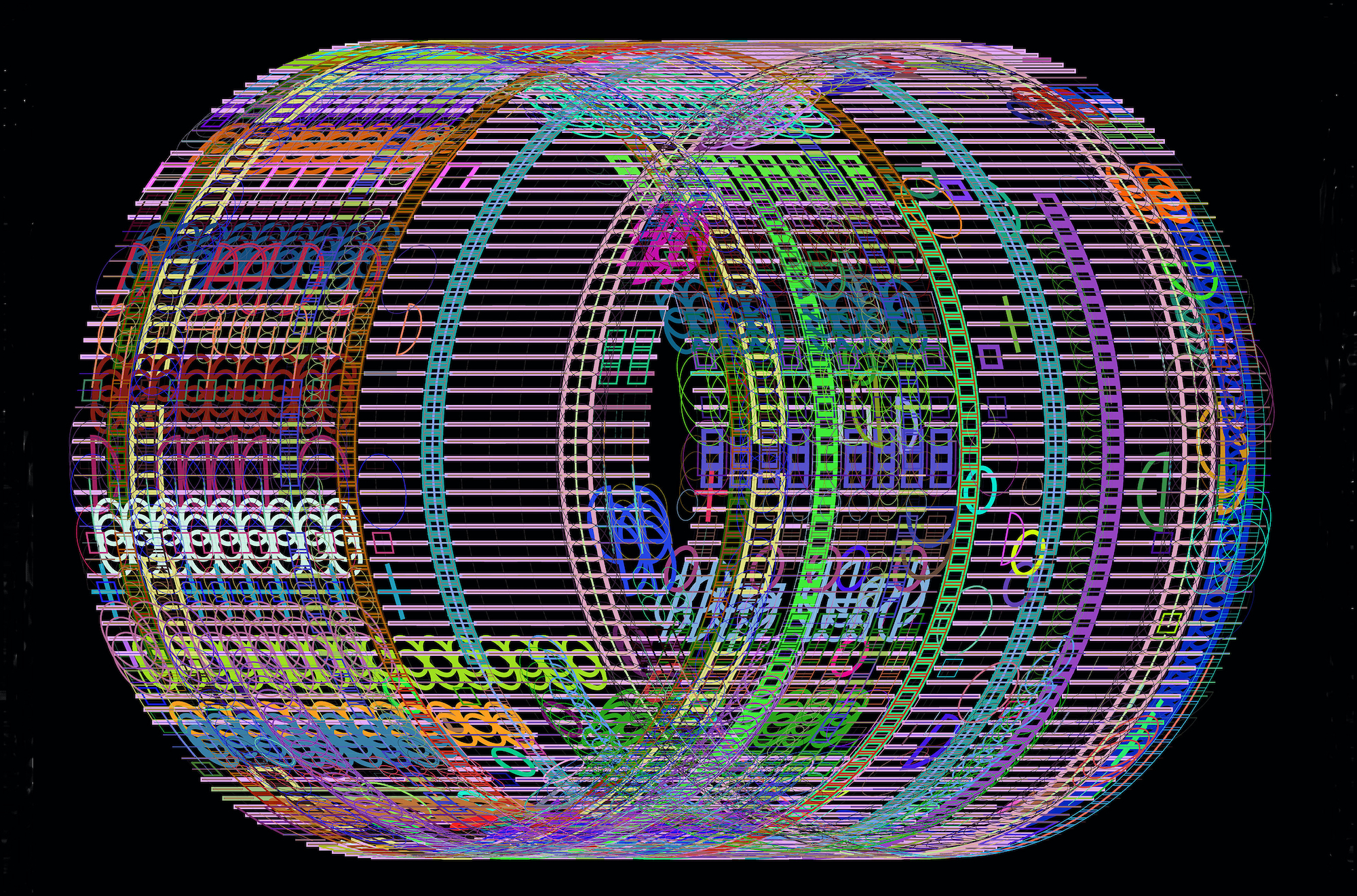
Publications (selection)
2014
Taylor, Grant. When the Machine Made Art. New York: Bloomsbury, 2014.
2010
Lieser, Wolf. The World of Digital Art. Konigswinter: H.F. Ullmann, 2010.
Reas, Casey and McWilliams, Chandler. Form+Code. New York: Princeton Architectural Press, 2010.
Klanten, R. ed. Data Flow 2. Berlin: Gestalten, 2010.
Farthing, S. ed. Art:From Cave Painting to Street Art. New York: Universe, 2010.
2009
Lieser, Wolf. Digital Art. Konigswinter: H.F. Ullmann, 2009.
Beddard, Honor and Dodds, Douglas. Digital Pioneers. London: V&A Publishing, 2009.
2008
Wood, Deborah. Imaging by Numbers. Evanston:Block Museum of Art, 2008
2007
Royal College of Art. Control Print. London: Royal College of Art, 2007.
2006
Walker, James Faure. Painting the Digital River. New York: Prentice Hall, 2006.
Wands, Bruce. Art of the Digital Age. London: Thames & Hudson, 2006.
1989
Lovejoy, Margot. Postmodern Currents. Ann Arbor: UMI Research Press, 1989.
1987
Galloway, David. Artware. Düsseldorf: Econ Verlag, 1987.
Goodman, Cynthia. Digital Visions. New York: Harry Abrams, 1987.
1985
“A Portfolio.” Perspectives in Computing. Vol. 5, No.2, (Summer, 1985), p. 39-40.
“Computer as Palette.” The Christian Science Monitor, (August 7, 1985), p. 23.
“Computer Technology Replaces the Brush of the Artist.” The New York Times, (October 13, 1985).
Wilson, Mark. Drawing with Computers. New York: Putnam, 1985
1983
“Artist’s Easel is His Computer Screen.” Los Angeles Times, (December 15, 1983), Part I-B, p. 10.
“Computer Art for Art’s Sake.” PC Magazine, (April, 1983), p. 73-85.
1978
Brand, Frederick and Massie, Rebecca. The Lewis Collection. Richmond: The Virginia Museum, 1978.
